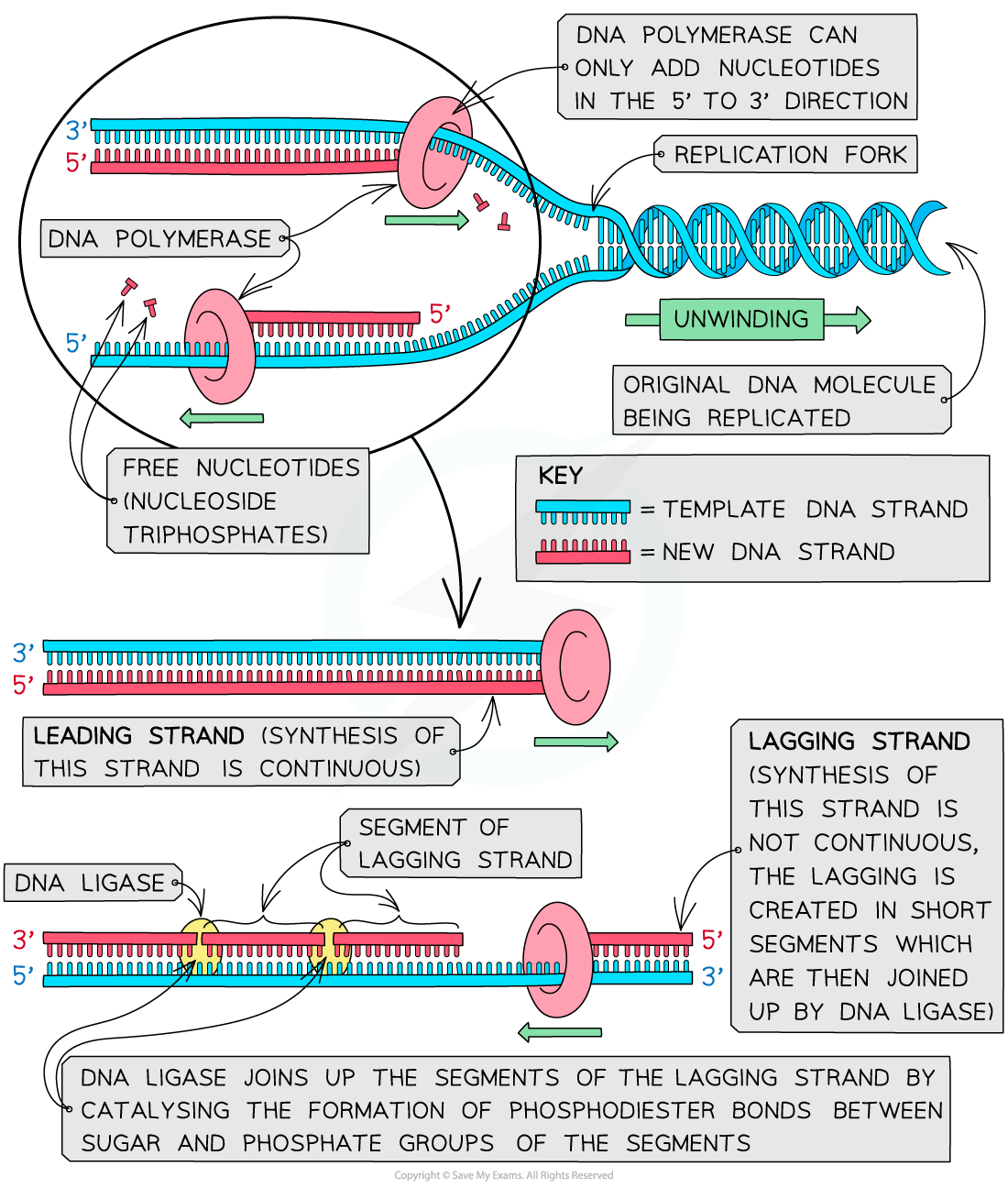Semi-Conservative DNA Replication (Cambridge (CIE) AS Biology): Revision Note
Exam code: 9700
Semi-conservative DNA replication
DNA replication occurs in preparation for mitosis when a parent cell divides to produce two genetically identical daughter cells
This is because each daughter cell needs to contain the same number of chromosomes as the parent cell
Therefore the number of DNA molecules in the parent cell must be doubled before mitosis takes place
DNA replication occurs during the S phase of the cell cycle
This occurs during interphase when a cell is not dividing
The hydrogen bonds between the base pairs on the two antiparallel polynucleotide DNA strands are broken
This ‘unzips’ or unwinds the DNA double helix to form two single polynucleotide DNA strands
Each of these single polynucleotide DNA strands acts as a template for the formation of a new strand
The original strand and the new strand then join together to form a new DNA molecule
This method of replicating DNA is known as semi-conservative replication because half of the original DNA molecule is kept (conserved) in each of the two new DNA molecules

DNA polymerase
In the nucleus, there are free nucleotides to which two extra phosphates have been added
These free nucleotides with three phosphate groups are known as nucleoside triphosphates or ‘activated nucleotides’
The extra phosphates activate the nucleotides, enabling them to take part in DNA replication
The bases of the free nucleoside triphosphates align with their complementary bases on each of the template DNA strands
The enzyme DNA polymerase synthesises new DNA strands from the two template strands
It does this by catalysing condensation reactions between the deoxyribose sugar and phosphate groups of adjacent nucleotides within the new strands
This creates the sugar-phosphate backbone of the new DNA strands
DNA polymerase cleaves (breaks off) the two extra phosphates and uses the energy released to create the phosphodiester bonds (between adjacent nucleotides)
Hydrogen bonds then form between the complementary base pairs of the template and new DNA strands


Leading and lagging strands
DNA polymerase can only add new DNA nucleotides in the 5’ to 3’ direction, so the new DNA strand is built from its 5' end towards its 3' end
This is because DNA polymerase is an enzyme with a specific active site, so can only attach to the 3’ end of the original strand and move towards its 5' end
On one of the DNA template strands the DNA polymerase enzyme can move continuously towards the replication fork as the DNA molecule is unzipped, so the new strand will be produced in one long piece
The strand that DNA polymerase synthesises continuously in this way is known as the leading strand
On the other strand, which is antiparallel to the strand described above, DNA polymerase moves away from the replication fork, meaning that the new DNA is synthesised in short segments as the new sections of the template strand are exposed
The strand in which DNA is synthesised in short segments is known as the lagging strand
The short segments are known as Okazaki fragments
A second enzyme, DNA ligase, is needed to join these short segments together to form a continuous new DNA strand


Unlock more, it's free!
Did this page help you?